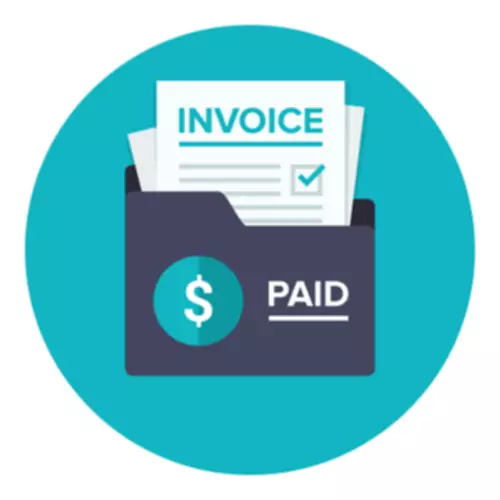If one or more payments have been missed where regular payments are contractually required, such as mortgage or rent payments and utility or telephone bills, the account is in arrears. Payments that are made at the end of a period are also said to be in arrears. In this case, payment is expected to be made after a service is provided or completed—not before. Paying employees in arrears is generally a better option than current pay for small businesses as it allows you to more precisely manage and budget your finances.
In plain speak, in arrears is when you are late on a regularly due payment. In other words, if you, as a business owner, are behind on payments you owe your vendors, that’s payment in arrears. Arrears in accounting can occur in several cases, and the first case we’ll mention is the case of being paid in arrears — for example, when your business pays your vendor in arrears. Paying in advance would be the complete opposite of paying in arrears.
In arrears payroll is the practice of paying employees for labor completed during a previous time frame. For instance, if a two-week pay period ends on a Friday, workers may not receive their paycheck until the following Friday. As long as payment is provided on the designated payday, in arrears payroll is not considered a late payment by the employer. As we’ve already mentioned, arrears in payroll refer to the situation where employees are compensated for the hours worked in the previous pay period instead of the current pay period.
It’s important to stay on top of financial obligations (both incoming and outgoing) especially if one of your clients has missed a payment. It is a solid idea to have a policy in place for what happens whenever an account is in arrears. For accounting purposes, arrears refers to settling accounts for goods and services with external vendors. For example, suppose a supermarket receives a new shipment of fresh milk.
- Payment in arrears is a payment that is made once a service has been offered.
- Although both definitions are perfectly valid and frequently used, more often than not, arrears is used to refer to missed payments.
- Usually, the only way to get out is to make extra payments until you get caught up.
- For example, an annuity transaction may involve equal payments of $300 over a period of 10 years.
Any transition can be a little difficult for employees, especially when it comes to payroll. If you decide you want to switch to arrears payment, you need to be aware of the potential consequences this may have for your employees. Perhaps your employees have become accustomed to the current payment system, and the transition from paying in current to paying in arrears is not something they anticipated. Paying employees in arrears gives employers more time to calculate all the factors, such as overtime, paid time off, or commissions, before issuing payments. Also, if an employee calls a day off or falls sick during a weekday, the current pay hours become harder to predict.
About Paychex
If you want to learn more about arrears and arrears in payroll, check out these frequently asked questions we’ve singled out for you. Having to go one or two weeks without pay can affect your employees’ finances. The late payment and interest fees are usually agreed upon and written into any sales agreement or contract between two parties. By following this advice, it’s possible to avoid most of the major pitfalls when paying in arrears.
- It is treated as collateral imposed against the taxes an employee is liable to pay during a particular year.read more.
- Having an in-depth understanding of how paid in arrears works is vital so that you can comprehend how such payments are applied in transactions.
- When you pay your employees in current, on the other hand, you pay them the day the set pay period ends.
- On the contrary, a standard swap sets the interest rate at the beginning and pays the interest at the end.
If you miss (or are “behindhand” on) a payment, interest will begin to accrue and anything you pay back will go to the oldest bill first. So you can see what a hole you dig for your small business when you fall into arrears. Usually, the only way to get out is to make extra payments until you get caught up. And that’s too bad, because if you are in arrears, you are in trouble. Like most legal matters, being in arrears is also a bit more complicated than that basic definition.
Payment in Arrear of Salary
If you pay off $500 of the June 31 payment, you’re in arrears for $200. However, an account in arrears can sometimes refer to an account behind payments. Suppose the restaurant still hasn’t paid the invoice 60 days later. In that case, their account is in arrears, and the supplier may choose to cut off deliveries until arrears payments are settled. In terms of accounting, paying in arrears refers to goods and services received from external vendors instead of employees. You may have come across the term “paid in arrears” when managing your small-business accounting, but do you know what it means?

A knowledgeable accountantwill be able to advise you on the best day to make the transition to paying in arrears and provide you with all of the details to pass onto your employees. It is important to understand how paying in arrears can be used in accounting so that you know how to use and apply them to your unique business situation. Whatever the reason, if you missed payments over a period of time, you owe that entity money. Obviously, the best and easiest way to get out of arrears is to catch up. Pay the entire amount (and any interest) past due, however difficult that may be, and move on.
An arrears swap is preferred by speculators who predict the yield curve and receive interest payments at the end of the coupon period. The interest reflects the timeliness of the predictions they made at the start of the coupon period. If the company’s financial situation improves in the future, the board of directors will authorize the payment of all or a portion of the cumulative dividends.
The concept of arrears also applies when a publicly-traded company issues dividends to its investors. It occurs when the company delays in paying the cumulative dividends to its preferred stockholders by the agreed date. Preferred stockholders are a type of stockholders that must be paid regardless of whether the company makes profits or not. Arrearage also applies to dividends that are due but have not been paid to preferred shareholders. Because preferred shares have guaranteed dividends regardless of whether the company makes a profit or not, dividends are said to be in arrears if the company misses a cumulative dividend payment. The dividends in arrears must be disclosed in the footnotes to the financial statement.
When is Payment in Arrears Used?
Preferred stockholders must be paid first before any payments are made to common stockholders. The paid dividends will be recorded as a short-term liability in the balance sheet. Payment in advance is made before the actual service has been provided. An example of a payment in advance is rent, which is paid at the start of the month. If a tenant fails to honor the payment at the start of the month and makes the payment one month later, the payment is said to be one month in arrears.

It also affords them more time to properly calculate all payroll variables – hourly wages, overtime wages, tips, commissions, tax deductions, paid time off, etc. Payments are paid after a specific period since the goods or services are delivered, also called arrears. In short, missed payments that were scheduled are referred to as payments in arrears. It could be any scheduled payments such as rent, insurance premium, etc.
In some cases, this is the specified payment arrangement, but in others, it’s the result of an error or an inability to pay on time. To calculate the amount due for payment in arrears for TCC, we can use the calculation mentioned earlier in the article. After it signed the agreement, TCC made the payments promptly for three months. But, an unexpected fire caused the company significant financial losses. Because of the economic duress, the company produced only 30% of the payment for the remaining three months. Some professions or industries require payment in advance for work that is not yet complete.
Using invoicing software helps reduce the risks of billing in arrears because it allows you to keep track of all your invoices in one place. When you’ve just finished a tough week at work, what can certainly lift your spirits is being able to access that hard-earned money right away. Paying in arrears prevents employees from doing so, which is why some employees may find it a less desirable compensation option. Paying in arrears is more convenient for John’s employer, since they can take some time to consider factors such as paid time off before doing the final pay calculation.
It simply means that the payment is late or paid at the end of a specific period. If you work in payroll or accounting, you’re probably familiar with the phrase “paid in arrears.” But this knowledge shouldn’t be limited to the accounting department. The term has implications for business-wide activities, so it’s essential to understand what it means and how it applies to your business. Arrears payroll is the cadence of running the past week’s payroll instead of the current week, or any kind of delayed payroll schedule. The alternative to this would be “current pay”, in which employers pay their employee the day the pay week ends.
The payment in arrear is calculated by adding the outstanding amount with late fees or penalties for late payment and then subtracting any partial payment that has been made in the period. The late payment and interest rates are usually agreed upon beforehand in the contract. Payment in arrears refers to the practice of making a payment to a service provider after a good or service has been delivered or after terms of an agreement is met.
Then, calculate the amount from the previous paycheck to the current pay period. Finally, subtract any amount already paid for this period, and add extra wages for tips, overtime, or employee benefits. In general, payrollsPayrollsPayroll refers to the overall compensation payable by any organization to its employees on a certain date for a specific period of services they have provided in the entity. This total net pay comprises salary, wages, bonus, commission, deduction, perquisites, and other benefits.read more worldwide are paid in arrears, i.e., after an employee works for a fixed period.
While paying in arrears means settling payment after work is completed, paying in advance means paying upfront for work yet to be completed. Whether a bill should be settled in arrears or in advance depends on the context. For example, employee salaries, utility bills, and taxes are all payments typically settled in arrears.